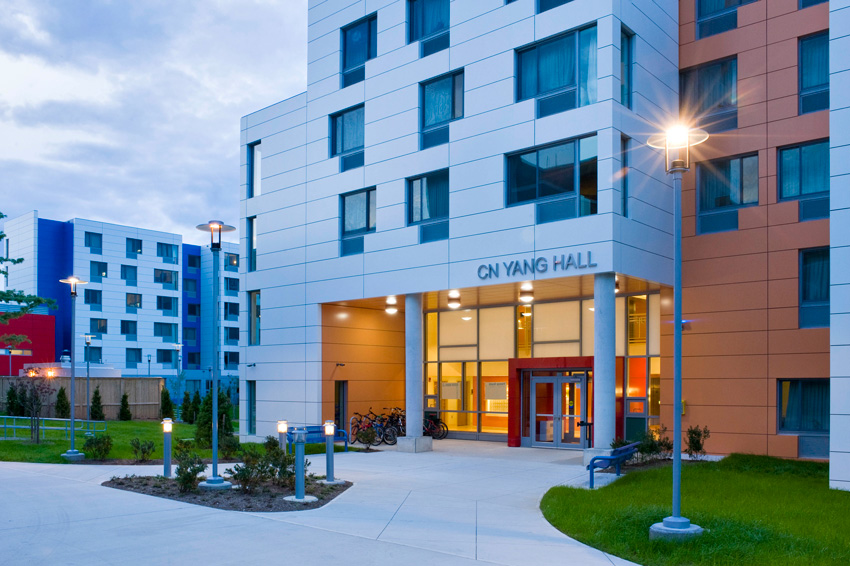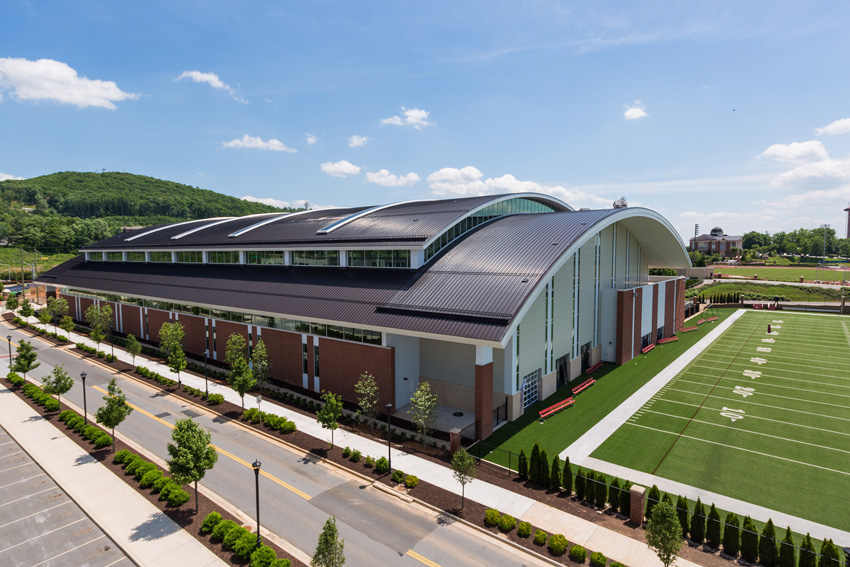Show Your Mettle
Weighing the Cost of Metal: Initial Advantages
As soon as it arrives on-site, metal is already helping keep costs in check. Though initially higher in price to purchase than some entry-level materials, metal roof and wall systems can help lower construction, operating, maintenance, and LCCs.
Metal lends itself to modular construction and its accompanying expedited construction benefits. Nothing quite compares to witnessing a building take shape within a matter of weeks, along with concomitant lower costs and speed to occupancy. Compared to other materials such as brick or concrete, metal roofing and walls are relatively lightweight, providing less of an impact on the load-bearing foundations. Installation is much quicker than with other heavier and bulkier wall materials, resulting in significant labor and scheduling savings, and potentially reducing structural framing requirements. This can reduce labor costs, minimize construction delays, and get the building closed-in quickly.
In addition, metal roofs and walls can be erected even in inclement weather conditions, allowing construction to proceed regardless of the season and enabling contractors to move forward with interior work.

Photo courtesy of 3A Composites USA Inc.
STONY BROOK UNIVERSITY NOBEL HALLS
Metal offers a suite of benefits that deploy as soon as it arrives on-site. It is quicker to install than other materials and is not subject to weather delays, allowing for projects to stay on schedule.
Where composite or IMP products are selected, building teams can cash in on additional construction benefits. IMPs install in one step, creating a finished wall, insulation, and liner, thereby allowing the construction team to dry-in the building faster than with conventional construction methods. As opposed to conventional stud construction, for example, which requires contractors to wait for multiple trades to install sheathing, building wrap, and insulation prior to interior finishing, IMPs offer a one-shot building enclosure installation, significantly shortening project schedules and construction expenses, states Don Olsen, vice president of operations with the Hartland, Wisconsin-based A/E firm ESI Design Services.
Under research conducted by the Metal Construction Association (MCA) and published in its Selection Guide for Insulated Metal Panels, IMPs can be erected at a rate of up to 5,000 square feet per 8-hour shift by a four-person crew on an industrial project, and up to 1,100 square feet per 8-hour shift by a four-person crew on an architectural project.
Unlike some cladding materials, IMPs can be installed year round, even in adverse weather conditions.
“One of the major advantages of IMPs is that they typically do not need extensive backup walls or support system assemblies, while still meeting code requirements,” adds Deniz Ferendeci, AIA, LEED AP BD+C, director of building services, Dyer Brown, Boston. “The majority of these products are self-supporting, which means installation is faster and less complicated.” IMPs perform triple duty as air and water barriers with insulation, helping them survive the value-engineering process.
Speed of build is a major advantage of metal. Building with metal takes less time to construct, and less time equals lower costs.
Additionally, using metal reaps immediate dividends when it comes to building insurance. The cost of risk insurance for metal buildings during construction is half that of other building materials because there is less risk of fire damage. Insurance may also be less after completion.










